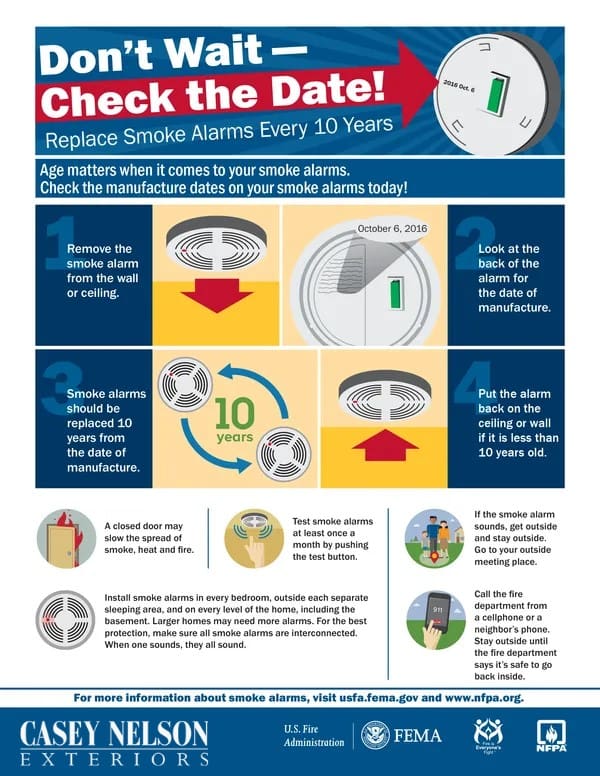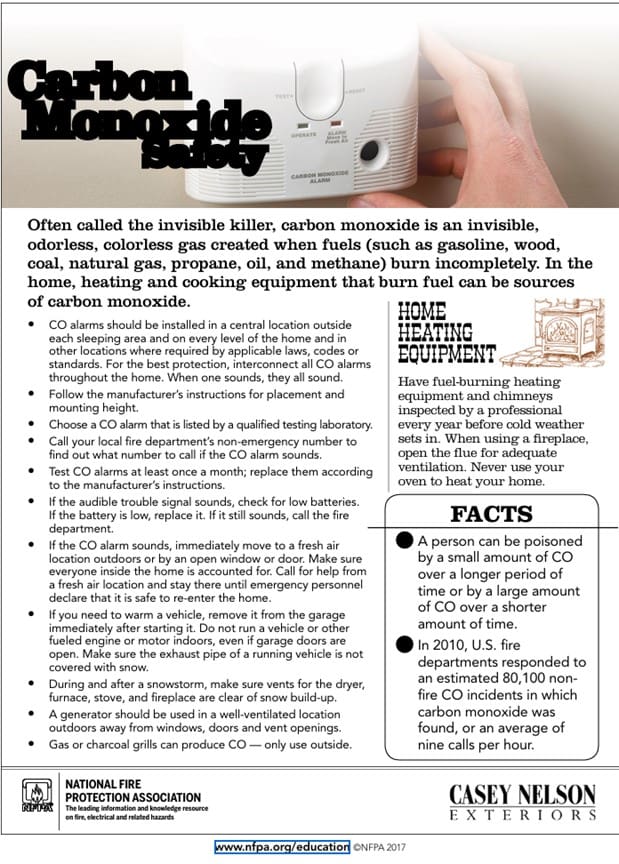Twice a year the clock moves one hour back – fall or one hour forward – spring. Mark this time of seasonal time change a time for home safety check.
Electrical Safety
- Manage Power Strips and Extension Cords
Proper use of power strips and extension cords is essential. Avoid overloading and make sure cords are never hidden under rugs or furniture. To keep electronics safe from electrical surges and help prevent potential fires, utilize power strips with built-in surge protection that will trip if overloaded.
- Inspect Electrical Cords
Inspect electrical cords for fraying, cracking insulation or wire damage to prevent future issues. Replace worn-out cords right away.
- Modernize Wiring
If your home is 30 or more years old, have the wiring evaluated or updated by a licensed electrician. Modernizing your electrical system can increase safety, reduce energy costs and prevent potential hazards.
Fire Safety
Remember, having working smoke alarms in the home can double the likelihood of safely escaping a house fire in the event of an emergency and are there to help protect you round-the-clock. It’s important to install smoke alarms throughout the house, including the living room, kitchen, bedrooms, hallways, basement and garage. As an additional safety measure, you should also be prepared to tackle small fires quickly by keeping fire extinguishers in key areas, including the kitchen, basement and garage.
- Keep Escape Routes Clear
Ensure that evacuation pathways, like hallways and in front of windows, are free from obstructions. Practice periodic fire drills so everyone knows exactly what to do and where to meet.
- Reduce Clutter
Keeping combustible items, such as paper, towels and other clutter, away from heat sources like stoves, space heaters and fireplaces can significantly reduce the chance of an accidental fire igniting.
- Maintain Smoke Alarms and Fire Extinguishers
Smoke alarms save lives. Test them monthly and replace the batteries semi-annually or replace any smoke alarm equipped with a built-in 10-year battery after the 10-year timespan has passed. Avoid placing alarms too close to vents, fans, or in very drafty areas, as drafts can blow smoke away from the detector.
Store your fire extinguisher close by, but not immediately next to, heat sources like stoves and water heaters, and keep the extinguisher’s periodic service tag current
- Use Lithium-Ion Batteries Properly


Carbon Monoxide Safety
To ensure carbon monoxide (CO) safety, install CO alarms on every level of your home and near sleeping areas, have fuel-burning appliances inspected annually, and always use generators, grills, and vehicles outside. In case of an alarm, leave the home immediately and have all appliances and the detector inspected by professionals.
- Install and Maintain CO Alarms
- Install a working carbon monoxide alarm on every level of your home and outside each separate sleeping area.
- Test your alarms monthly.
- Change batteries at least once a year, unless they are sealed long-life units.
- Maintain Fuel-burning Appliances and Vents
- Have a qualified professional inspect all fuel-burning appliances, such as furnaces, water heaters, and gas stoves, annually.
- Ensure the flue for your fireplace is open when in use.
- Check that your dryer, furnace, stove, and fireplace vents are clear of snow, debris, and lint.
- Make sure appliances are installed according to manufacturer instructions and building codes.
- Use Equipment Safely
- Never: run a car, generator, or other gasoline-powered equipment in an attached garage, even with the door open.
- Only use generators, charcoal grills, and propane grills outside, away from windows, doors, and vents.
- Use Your Oven or Stovetop for Cooking Only, NOT for Heating Your Home.
- What to do if an alarm sounds
- Leave the house immediately to a safe location with fresh air.
- Call 911.
- Do not turn off the alarm, as you need to wait for first responders to arrive.

Emergency Preparedness
- Build a Disaster Kit
Create a kit with items like a first-aid kit, batteries, flashlights, non-perishable food, water, and a NOAA weather radio.
- Emergency Contact Plan
Make a plan with your family and practice it. Include essential items like medical information and contact numbers.
- Car Safety Kit
Be prepared for winter weather at home, at work and in your car. Create an emergency supply kit for your car. The National Safety Council recommends the following:
- Blankets, mittens, socks, and hats
- Ice Scraper and snow brush
- Flashlight, plus extra batteries
- Jumper cables
- First-aid kit – band-aids, adhesive tape, antiseptic wipes, gauze pads, antiseptic cream, medical wrap
- Bottled water
- Multi-tool or Swiss Army knife
- Road flares or reflective warning triangles
- Windshield cleaner
- Full tank of gas
- A bag of sand to help with traction (non-clumping cat litter works too)
- Snow shovel
- Blanket
- Tow Strap
- Hand warmers
- Winter boots



